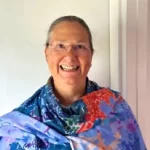
–
This is the kind of book I enjoyed in audio that I would never have read in text. I’ve been doing a lot of driving this month and I found this non-fiction book a slow but fascinating read on CD.
I chose it because I loved Longitude by the same author (I gave both the book and the miniseries 5 stars predating this blog). The science in this one was fastidious, but much more dry, and without the power plays that added intrigue to her previous book. That said, I was content to listen and learn things I would never have known otherwise. There is such a rich history here of women in early astronomy, which to me was worth wading through.
Unlike in Hidden Figures, where women were the thwarted unsung heroes, women in early astronomy were wisely encouraged at the Harvard Observatory and given many opportunities, which they fully utilized. This book covers the time period between 1882 and 1941, and many women, together with a few enlightened men, drove much of the progress in astronomy. It is commented in the book that astronomer’s work is tedious and much like bookkeeping, and over many years women did this grunt work. Because they did, they were rewarded by making ground breaking discoveries.
One woman photographed and catalogued over 100,000 stars and we still use her cataloging system today. Another identified nova and discovered over 300 variable stars, while yet another figured out a way to measure distances between stars. Later, it was a woman that first realized that the universe is made of a super-abundance of hydrogen and helium– that “the lightest most immaterial elements reign supreme.” Women were the first PhD students at the Harvard Observatory (given their degrees from Radcliffe), and the first woman professor at Harvard was an astronomer. In addition to all that, women philanthropists paid for the equipment, the salaries, and the scholarships. Also, women were recognized and named on an equal footing with men on research papers, and their names were put forward for big prizes with they eventually got. It was all refreshingly progressive for the time period.
The title the Glass Universe does not refer to the glass ceiling as some might think, but instead to a half million spectroscopy glass plate photographs of the stars that the Harvard Observatory generated, analyzed, and catalogued in those years. It is a unique treasure that is still there, and one on which the research of astronomy still stands.
If you are interested in astronomy, or like detailed histories especially in the sciences, or you are interested in obscure women’s history, this book might be for you. While a bit tedious at times, reading it simultaneously while doing something else (like driving) was just the ticket for me. Dava Sobel has been as conscientious with the carefully researched facts here as those early female human calculators were all those years ago with the universe that lay before them waiting to be understood. I give this book four stars.
–

1 Comment
Pingbacks
-
[…] An educational book: The Glass Universe by Dava Sobel (my 4 star review here) […]






